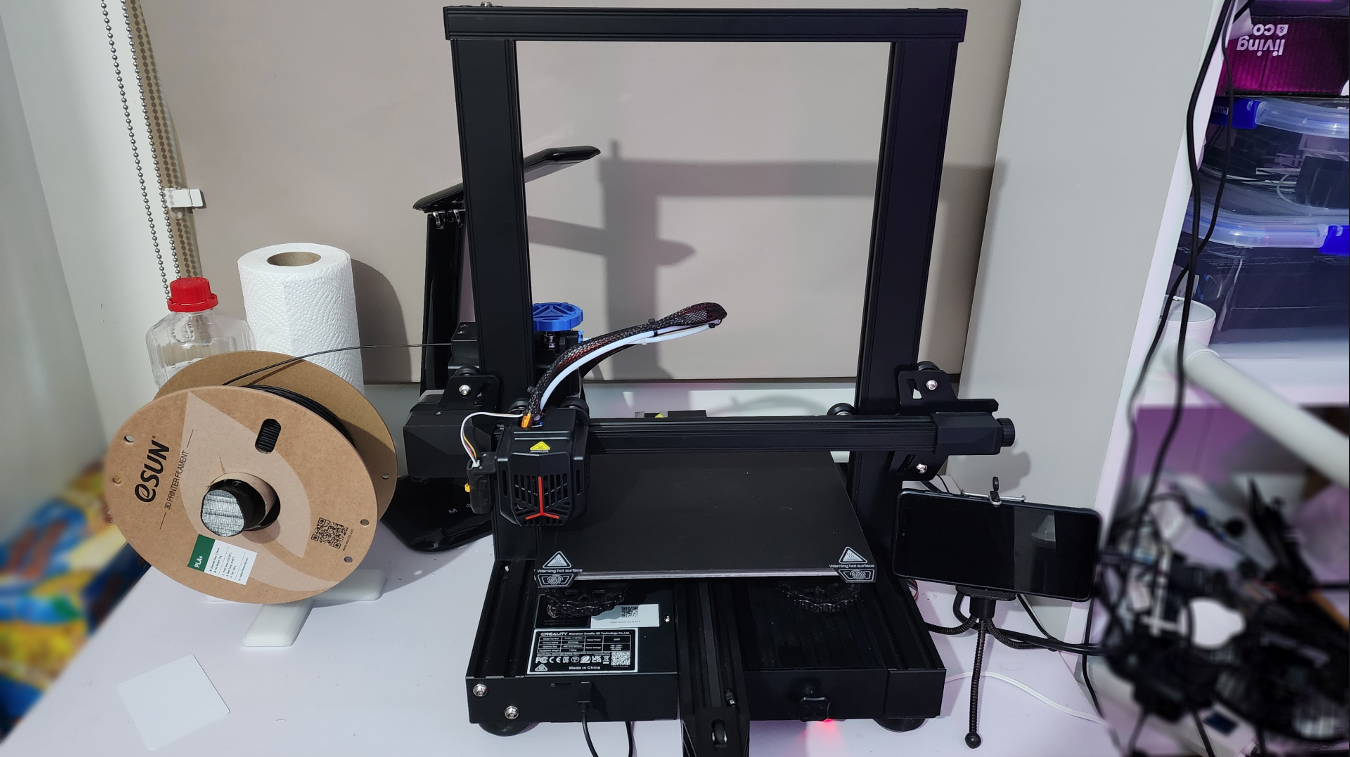Ender 3
The Ender 3 is one of the most popular and influential 3D printers on the market, particularly known for its affordability, ease of use, and solid performance. Manufactured by Creality, the Ender 3 has become a go-to choice for both beginners and experienced 3D printing enthusiasts.
Build Volume
The Ender 3 offers a respectable build volume of 220 x 220 x 250 mm (8.66 x 8.66 x 9.84 inches), making it suitable for a wide range of projects, from small parts to larger models.
Printing Technology
The Ender 3 uses Fused Deposition Modelling (FDM) technology, which involves melting and extruding plastic filament to build objects layer by layer.
Hotend and Nozzle
The printer is equipped with a standard 0.4 mm nozzle and can reach temperatures up to 255°C, allowing it to print with various materials, including PLA, ABS, TPU, and PETG.

Heated Bed
The Ender 3 features a heated bed, which can reach up to 110°C. This is essential for reducing warping when printing with materials like ABS.
Open-Source Design
One of the key strengths of the Ender 3 is its open-source design. This allows users to easily find upgrades, modifications, and community support. It encourages tinkering, making it a favorite among DIY enthusiasts.
Print Quality
Despite its low price, the Ender 3 delivers impressive print quality with a resolution as fine as 0.1 mm. The printer’s performance rivals more expensive models, making it a cost-effective solution for high-quality 3D prints.
Upgrades and Modifications
A significant aspect of the Ender 3’s popularity is its upgradability. Users often enhance their printers with upgrades such as glass beds, auto-leveling sensors, direct drive extruders, and improved cooling solutions. There is a vast ecosystem of third-party upgrades and printable modifications available.